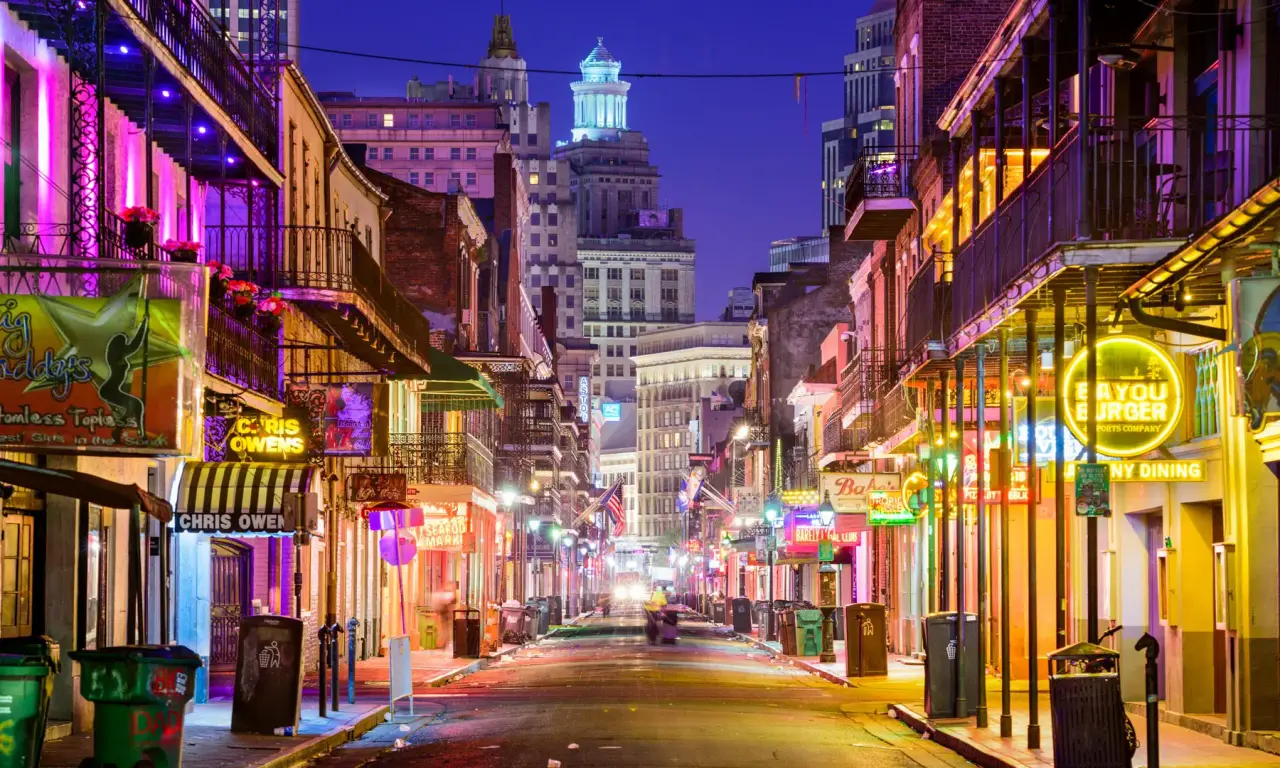Sep 20, 2021 5:26 am

New Orleans is, and has always been, one of the most colorful urban centers in America. Few cities in the United States can boast such a deeply rich and multi-cultural heritage. The city is a melting pot of Native American, Spanish, French, Acadian, and Creole influences mixed with later Haitian, Latin American, Vietnamese and Middle Eastern elements. This has resulted in an interesting cultural blend that cannot be easily defined or categorized. This fusion of cultures is perhaps best expressed in the city's world-renowned art, music, architecture, cuisine, unique dialects, and annual celebrations.
New Orleans is home to two separate thriving religions. It boasts a Catholic majority and a significant Voodoo minority. Yet, it is known far and wide as a city of vice, drawing millions of tourists who come to shed their inhibitions in yearly festivals such as Mardi Gras. The city is an endless combination of debauchery and faith, punctuated by tall cathedrals, flickering street lights, crowds of strangers, and entire neighborhoods that exude a complex culture and rich sense of place. In N'awlins, history struts as loudly as Carnival, and the supernatural is very prevalent if one knows where to look.
As with any modern city, New Orleans has its troubles. Crime is a significant issue, which is perhaps not surprising given the city's high number of visitors. Wealth disparity is also very visible, with the rich dwelling in the palatial houses of the Garden District, and impoverished, overcrowded neighborhoods like the Lower Ninth Ward remaining devastated from the effects of Katrina. New Orleans struggles with infrastructure problems as it combats regular flooding, subsidence, and pollution (the city's fishing industry still suffers from the ecological damage caused by the BP oil spill in 2010). Each year the city sinks a little deeper into the surrounding swamp. And this is on top of all the ghosts.
New Orleans has one of the highest (if not the highest) population of ephemeral entities in the United States, earning among Sin-Eaters the appellation of "Most Haunted City in America." The municipality's tumultuous and tragic history is a large reason for this, as is the abnormally high amount of cenotes and Underworld gateways found within the region. Its many past battles, natural disasters, fires, outbreaks, and brutal slave trade, as well as more recent catastrophes such as Hurricane Katrina and the global pandemic, have all contributed to the city's sheer number of hauntings. New ghosts are constantly being born, and older ghosts tend to be established and powerful. It's enough to keep the New Orleanian Bound busy and vigilant.
Being a Sin-Eater in New Orleans means having your work cut out for you.
New Orleans Statistics
Nicknames: The Big Easy, Crescent City, N'awlins, NOLA (New Orleans, Louisiana).
Founded: 1718.
Location: Orleans Parish, Louisiana, United States.
Total Area: 349.85 mi² (906.10 km²). 169 mi² (440 km²) is land and 181 mi² (470 km²) (52%) is water.
Mean Elevation: Between 1 ft and 2 ft below sea level (0.3m to 0.6 m). Over half of the city is below sea level.
Tallest Building: Hancock Whitney Center (697 ft/212 m).
Population: 383,997. The New Orleans Metropolitan Area has 1,270,530.
Racial Demographics: Blacks or African Americans: 59.8%; White: 30.6%; Hispanics or Latinos: 4.9%; Asian: 2.9%; Native Americans: 0.2%; Other: 1.6%.
Supernatural Demographics: 99.999% of the city’s sapient residents are human; 0.001% qualify as non-human, partially human, or Awakened (i.e., Vampires, Werewolves, Sin-Eaters, Mages, Changelings, etc.). This percentage does NOT include ghosts and spirits. That means that there is roughly one supernatural for every 1,000 mundane humans in New Orleans.
Religious Demographics: Non-Religious: 35.9%; Catholicism: 36.3%; Baptist: 12.2%; Other Protestant Denominations: 7.1%; Judaism: 1.2%; Islam: 0.6%; Other: 6.7% (this includes Voodoo and Sin-Eater mystery religions).
Per Capita Income: $34,000. 23.7% of the city's population is below the poverty line.
Neighborhoods: New Orleans has 73 official neighborhoods, as well as 17 Wards and 13 planning districts.
Highways: Major east-west highways going into the city are the I-10 and I-12. Running north to south are the I-55 (to Chicago) and I-59 (to Chattanooga). If one just wants to cross from one side of the city to the other, the I-610 serves as a good local connector.
Water: New Orleans is located on the Mississippi Delta, south of Lake Pontchartrain, on the banks of the Mississippi River. It's approximately 105 miles (169 km) upriver from the Gulf of Mexico.
Demonym: New Orleanian.
Mayor: LaToya Cantrell (D).
Government: Mayor-Council.
Motto: "Laissez les bon temps rouler" ("Let the good times roll").


